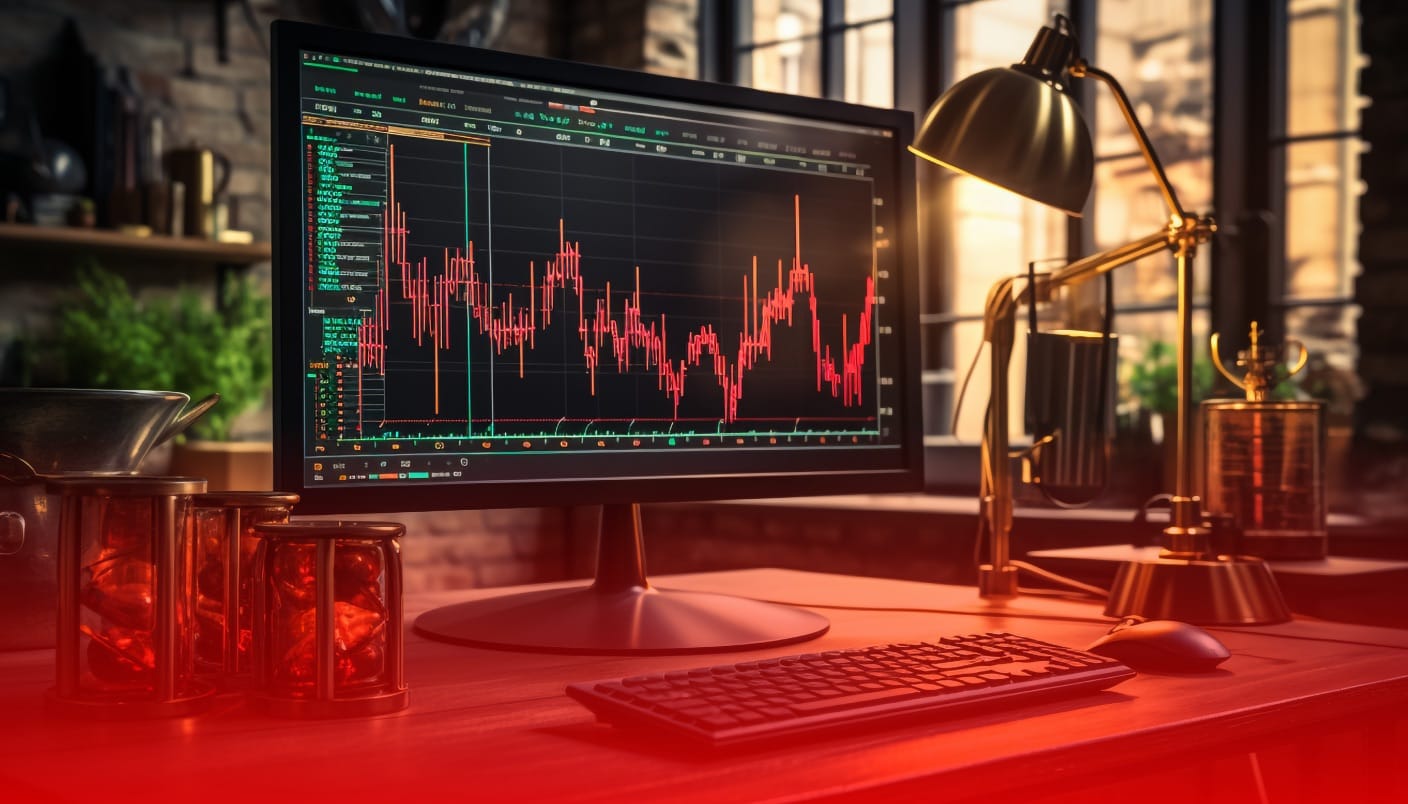Breaking News! 🚨 Top 10 brokers is here! See the most trusted trading platforms of 2024. Go now!
Forex Trading Fundamentals: Currency Market Dynamics
Dive into the world of forex trading, understanding currency market dynamics, trading strategies, risk management techniques, and key factors influencing exchange rates.
2 years ago, May 10, 10:24 am

The foreign exchange market, commonly known as the forex or currency market, is the largest and most liquid financial market in the world. With a daily trading volume exceeding $6 trillion, it dwarfs the volume of global equity and bond markets combined.
At its core, forex trading revolves around the buying and selling of currencies with the goal of profiting from fluctuations in their relative values. However, the forces that drive these fluctuations are complex, influenced by a multitude of economic, political, and market factors that are constantly in flux. Seasoned traders recognize that mastering the fundamentals of currency market dynamics is crucial for navigating this high-stakes arena.
In this comprehensive guide, we’ll delve into the heart of forex trading, exploring the intricate relationships between currency pairs, exchange rates, and the interplay of fundamental and technical analysis. We’ll uncover proven strategies employed by successful traders and offer practical tips to help you navigate the ever-changing currents of this captivating market.
Introduction to the Forex Market
The forex market is a vast network of banks, financial institutions, hedge funds, corporations, and individual traders who engage in the buying and selling of currencies. Unlike traditional exchanges with centralized locations, the forex market operates through an electronic network of banks, brokers, and traders from nearly every corner of the globe. This over-the-counter (OTC) market is open 24 hours a day, five days a week, with trading sessions spanning major financial centers like London, New York, Tokyo, and Sydney.
The primary participants in the forex market are:
- Commercial and investment banks
- Central banks
- Investment management firms
- Multinational corporations
- Retail forex brokers and traders
While thousands of currency pairs are technically traded, the market is dominated by a handful of extremely liquid pairs known as the “majors.”
These include:
- EUR/USD (Euro/U.S. Dollar)
- USD/JPY (U.S. Dollar/Japanese Yen)
- GBP/USD (British Pound/U.S. Dollar)
- USD/CHF (U.S. Dollar/Swiss Franc)
- AUD/USD (Australian Dollar/U.S. Dollar)
- USD/CAD (U.S. Dollar/Canadian Dollar)
The extreme liquidity of these pairs stems from the immense trading volumes between global financial centers and the divergent economic drivers of their underlying economies. Other commonly traded pairs include the “crosses” like EUR/GBP, EUR/JPY and GBP/JPY.
Fundamental vs. Technical Analysis
When it comes to analyzing currency movements and making trading decisions, forex traders generally employ two distinct approaches: fundamental analysis and technical analysis.
Fundamental analysis evaluates the intrinsic value of a currency by examining a wide range of economic, political, and social factors that influence its strength. Technical analysis, on the other hand, focuses solely on studying price charts, patterns, and historical trading data to identify potential trading opportunities.
Fundamental analysts delve deep into macroeconomic indicators, such as GDP growth, inflation rates, employment figures, trade balances, and interest rate policies of central banks. They scrutinize economic reports, policy statements, and geopolitical events to gauge the overall health and trajectory of an economy. A currency’s relative strength is often tied to the robustness of its underlying economy, and fundamental analysts aim to capitalize on these relationships.
Technical analysts, however, take a different path. They believe that all relevant information is already reflected in a currency pair’s price movements, and that studying these price patterns can provide valuable insights into future market behavior. Technical analysts rely on a diverse array of charting tools, indicators, and strategies to identify trends, support and resistance levels, and potential entry and exit points for trades.
The debate between fundamental and technical analysis has been ongoing for decades, with proponents of each approach arguing for its superiority. Some traders firmly believe in the power of fundamental analysis, asserting that economic and political factors ultimately drive currency valuations in the long run. Others swear by technical analysis, claiming that market psychology and price action hold the keys to profiting from short-term fluctuations.
In reality, many successful forex traders employ a combination of both fundamental and technical analysis. They use fundamental analysis to gauge the overall market direction and identify potential trading opportunities, while relying on technical analysis to pinpoint precise entry and exit levels. This synergistic approach allows traders to capitalize on the strengths of both methodologies, increasing their chances of success in the dynamic and ever-changing forex market.
Strategies for Forex Trading
The forex market presents a wide array of trading strategies that cater to different trading styles, risk appetites, and market conditions. While some traders prefer a more conservative approach, others thrive on leveraging aggressive tactics to capitalize on market volatility. Regardless of your trading philosophy, having a well-defined strategy is crucial for navigating the ever-changing currents of the forex market.
- Trend Trading: This strategy involves identifying and trading in the direction of prevailing market trends. Trend traders rely on technical analysis tools, such as moving averages, trendlines, and momentum indicators, to spot emerging trends and ride them until they show signs of exhaustion. Patience and discipline are key when trend trading, as trends can persist for extended periods.
- Range Trading: Also known as swing trading or swing trading, this approach focuses on trading within established support and resistance levels. Range traders aim to capture short-term price fluctuations within a defined range, buying near support and selling at resistance levels. This strategy requires precise entry and exit points, as well as effective risk management techniques.
- Carry Trade: The carry trade strategy involves borrowing a low-interest currency and using the proceeds to invest in a higher-yielding currency. Traders profit from the interest rate differential between the two currencies while also benefiting from any favorable exchange rate movements. However, this strategy can be risky, as sudden market shifts can quickly erode potential gains.
- Scalping: Scalpers are among the most active traders in the forex market, aiming to profit from small, frequent price movements throughout the trading day. This strategy requires a keen eye for identifying minor intraday trends and the ability to enter and exit trades swiftly. Scalping is a high-intensity approach that demands exceptional discipline and risk management skills.
- News Trading: Economic data releases, central bank announcements, and geopolitical events can trigger significant currency fluctuations. News traders closely monitor these events and aim to capitalize on the resulting market volatility by taking positions shortly before or immediately after the news release.
- Automated Trading: With the advent of algorithmic trading systems, traders can now employ automated strategies that execute trades based on predefined rules and parameters. These systems can rapidly analyze vast amounts of data, identify trading signals, and execute orders with precision, potentially minimizing emotional biases.
Each strategy has its own advantages, risks, and nuances, and traders must carefully evaluate their trading objectives, risk tolerance, and available resources before committing to a particular approach. Successful forex trading often involves a combination of strategic planning, technical expertise, and a deep understanding of market dynamics.
Practical Tips for Forex Traders
While the forex market presents enticing opportunities for profit, it is also a highly complex and dynamic environment that demands rigorous preparation and continuous learning. To increase your chances of success, it is essential to adopt a disciplined approach and cultivate a mindset that embraces prudent risk management practices. Start by paper trading or opening a demo account to gain practical experience without risking real capital. Once comfortable, transition to live trading gradually, employing proper position sizing and strict risk management rules.
Develop a comprehensive trading plan that outlines your strategies, entry and exit criteria, risk tolerance, and money management techniques. Stick to this plan rigorously, avoiding the temptation to deviate based on emotions or impulsive decisions. Continuously monitor and refine your strategies, adapting to changing market conditions while maintaining a cool, analytical perspective.
Leverage technology to your advantage by using robust trading platforms, real-time news feeds, and advanced charting tools. Stay informed about economic events, central bank policies, and geopolitical developments that could impact currency valuations. Collaborate with other traders, join online communities, and continuously seek educational resources to deepen your understanding of the forex market.
Perhaps most importantly, cultivate patience and emotional resilience. The forex market can be unforgiving, and even the most seasoned traders experience drawdowns and setbacks. Maintain a long-term perspective, learn from your mistakes, and resist the urge to chase losses or alter your strategies based on temporary market fluctuations.
Conclusion
The forex market is a dynamic and intricate arena that offers both challenges and opportunities for those willing to master its complexities. By understanding the fundamentals of currency market dynamics, employing effective strategies, and adhering to practical tips, traders can navigate this exciting landscape with greater confidence and potential for success. Embrace a continuous learning mindset, exercise discipline, and stay adaptable – these qualities will serve as invaluable assets as you embark on your forex trading journey.
Get SCTA's daily newsletter in your inbox every weekday.
You may unsubscribe at any time.
